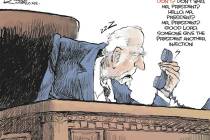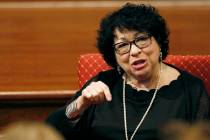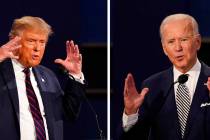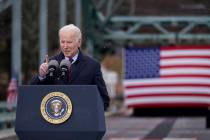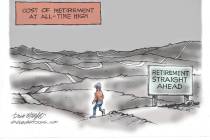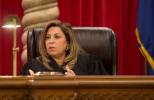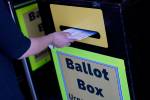Education establishment thwarts most reform
The bureaucracy lives on.
It always does.
Education reform was supposed to be much more than changes to teacher pay, tenure and layoff policies. Heading into the 2011 Legislature, there appeared to be bipartisan consensus that the governance and regulatory structure of Nevada's education system had swelled into an organizational chart better suited for the NBC sitcom "The Office."
This ridiculous mess of arrows, showing direct and indirect relationships between protectionist panels, elected officials and establishment employees, was rightly seen as an obstacle to accountability and improved student achievement. (The chart appears on Page 5D with the rest of this column.)
Moreover, with tax revenues scarce and Gov. Brian Sandoval pushing reduced government spending, lawmakers had fiscal incentives as well as political ones to streamline school oversight.
Yet after four months of wrangling and deal-making, with the state's budget settled through compromises on other legislation, Nevada's education bureaucracy is largely unchanged. Instead of hacking away at the abominable chart, Sandoval and lawmakers merely agreed to tinker with existing layers and move boxes around.
Senate Bill 197, signed into law by Sandoval last week, makes some modest improvements by giving the governor and the state superintendent (currently Keith Rheault) greater roles in shaping education policy. Now the governor, not the elected members of the State Board of Education, will appoint the state superintendent of schools. And the superintendent will have direct responsibility over six commissions and councils.
SB197 also blows up the 10-member State Board of Education, replacing it 18 months from now with a mix of elected and appointed, voting and non-voting members.
However, considering the board has gradually seen many of its functions stripped away over the past 20 years, and that the board attracts few candidates for office and even less voter interest, why keep it around at all?
In fact, SB197 recommended as much in its original draft.
The bill was the product of the Legislative Commission's Committee to Study the Governance and Oversight of the System of K-12 Public Education, yet another education study panel established by the Legislature. The committee was created in 2009 through Assembly Concurrent Resolution 2 and tasked with determining whether the education system is efficient and meets the needs of Nevadans.
After a year-long examination of the bureaucracy, the panel's answer was a resounding "no."
The committee advised eliminating the State Board of Education, the Commission on Educational Excellence, the Commission on Educational Technology, the Council to Establish Academic Standards and the Statewide Council for the Coordination of Regional Training Programs and replacing them with a new body, the Nevada Commission on K-12 Public Education. Additionally, the study panel recommended scaling back the powers of the Commission on Professional Standards in Education, a union-loyal, educator-dominated outfit that sets teacher licensing standards, including required pedagogy and psychology classes at education colleges.
None of those proposals was part of the amended, approved SB197.
"That was the heart of the recommendations, the streamlining of the governance structure," said State Board of Education President Christopher Wallace of Henderson. "It was supposed to create a clear path of accountability. By keeping all the councils and commissions with their same powers and responsibilities, you're just adding more lines to that flow chart."
Instead, as a result of negotiations between Sandoval and leaders of the Legislature's majority Democrats, the State Board of Education was reconstituted exactly as the study panel envisioned the proposed Nevada Commission on K-12 Public Education -- minus all the new responsibilities it was supposed to take from eliminated councils and commissions. And Sandoval failed to kill off the Board of Regents P-16 Council, as he had proposed in Assembly Bill 548. That bill died in committee.
The 10 members of the State Board of Education will have their current terms end Jan. 7, 2013 -- even the four members elected to four-year terms last November. They'll be replaced by four new members, one in each Nevada congressional district, to be elected in November 2012. The three other voting members will be appointed by the governor, with one each nominated by the Assembly speaker and the Senate majority leader. The three appointees must comprise one teacher, one parent of a child enrolled in a Nevada public school and one person active in private business.
Four nonvoting board members will comprise one school board member, one county superintendent, a representative of the higher education system and a public school student.
So the education establishment, found by the study commission to be inefficient and not meeting the needs of Nevadans, is thus guaranteed to have a place at the table in future Board of Education meetings. And a public schoolteacher will have a vote in deciding education policy, including graduation standards.
It's not every day that you see blatant conflicts of interest and separation of powers violations written into state law. But, hey, this is Nevada, after all.
"Based on the conversations I've been party to, the simplification and streamlining that were taken out of the bill will be worked out next session," said State Board of Education member Steven Corbett of Las Vegas. "They want to do it in incremental steps."
It took 20 years to build the confounding bureaucracy we have today. It won't go away overnight -- if ever.
Glenn Cook (gcook@reviewjournal.com) is a Review-Journal editorial writer.
Nevada's education bureaucracy








